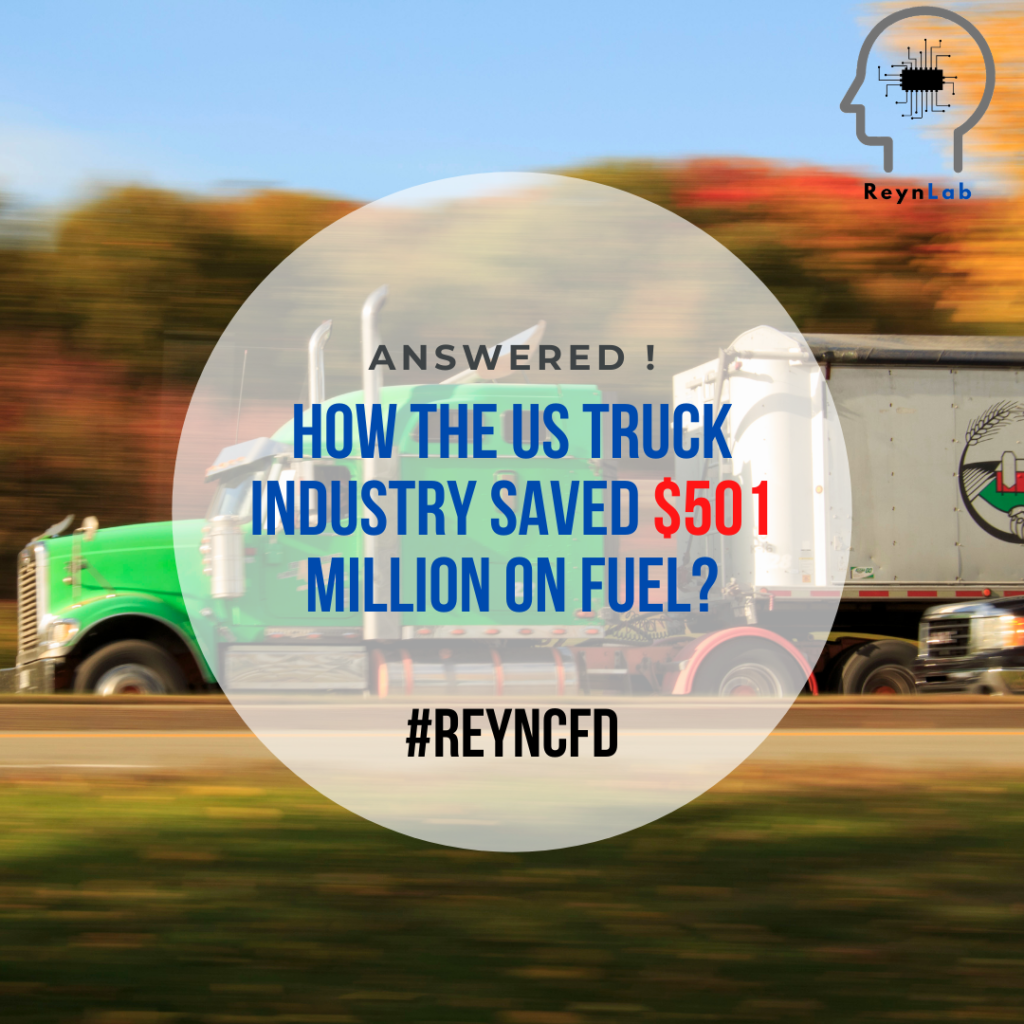Answered !

- In the US 70% of the fuel consumption is used for transportation & 20% of this fuel consumption is used by heavy-duty trucks
- In 2016, the United States consumed 7.6 six billion barrels of fuel. 20% (approx) of this is being used by the heavy-duty trucks
- 21% of this fuel consumption is to compensate for drag forces.
- If you are able to reduce the drag, it reduces fuel consumption & we can save fuel.

How the U.S. Trucking Industry Saved $501 Million on Fuel
The U.S. trucking industry has achieved significant fuel cost savings, amounting to $501 million, through the adoption of advanced technologies and sustainable practices. This remarkable feat underscores the industry’s commitment to efficiency and environmental responsibility.
Key Strategies Driving Fuel Savings
Several initiatives have contributed to these substantial savings:
- Adoption of Fuel-Efficient Technologies: Trucking fleets have increasingly integrated technologies such as aerodynamic enhancements, low-rolling-resistance tires, and automatic tire inflation systems. These innovations collectively improve fuel economy by reducing drag and optimizing vehicle performance.
- Driver Training Programs: Investing in driver education has proven effective. Training programs focusing on fuel-efficient driving techniques, such as maintaining steady speeds and minimizing idling, have led to measurable fuel consumption reductions.
- Implementation of Telematics and Data Analytics: Utilizing telematics systems allows for real-time monitoring of vehicle performance and driver behavior. Data analytics help identify areas for improvement, enabling fleets to make informed decisions that enhance fuel efficiency.
- Regulatory Compliance and Incentives: Compliance with fuel efficiency standards set by regulatory bodies, coupled with incentives for adopting green technologies, has motivated fleets to prioritize fuel-saving measures.
The Impact on the Industry
These concerted efforts have not only led to significant cost savings but also contributed to environmental sustainability by reducing greenhouse gas emissions. The industry’s proactive approach serves as a model for other sectors aiming to balance economic and environmental objectives.
Looking Ahead
The trucking industry’s success in saving $501 million on fuel demonstrates the tangible benefits of embracing innovation and sustainability. As technology continues to evolve, further opportunities for efficiency and cost savings are anticipated, reinforcing the importance of ongoing investment in fuel-saving strategies.
How the U.S. Trucking Industry Saved $501 Million on Fuel
The U.S. trucking industry has achieved significant fuel cost savings, amounting to $501 million, through the adoption of advanced technologies and sustainable practices. This remarkable feat underscores the industry’s commitment to efficiency and environmental responsibility.
Key Strategies Driving Fuel Savings
Several initiatives have contributed to these substantial savings:
- Adoption of Fuel-Efficient Technologies: Trucking fleets have increasingly integrated technologies such as aerodynamic enhancements, low-rolling-resistance tires, and automatic tire inflation systems. These innovations collectively improve fuel economy by reducing drag and optimizing vehicle performance.Federal Register+3University of Michigan+3US EPA+3
- Driver Training Programs: Investing in driver education has proven effective. Training programs focusing on fuel-efficient driving techniques, such as maintaining steady speeds and minimizing idling, have led to measurable fuel consumption reductions.Trucking Research
- Implementation of Telematics and Data Analytics: Utilizing telematics systems allows for real-time monitoring of vehicle performance and driver behavior. Data analytics help identify areas for improvement, enabling fleets to make informed decisions that enhance fuel efficiency.
- Regulatory Compliance and Incentives: Compliance with fuel efficiency standards set by regulatory bodies, coupled with incentives for adopting green technologies, has motivated fleets to prioritize fuel-saving measures.
The Impact on the Industry
These concerted efforts have not only led to significant cost savings but also contributed to environmental sustainability by reducing greenhouse gas emissions. The industry’s proactive approach serves as a model for other sectors aiming to balance economic and environmental objectives.
Looking Ahead
The trucking industry’s success in saving $501 million on fuel demonstrates the tangible benefits of embracing innovation and sustainability. As technology continues to evolve, further opportunities for efficiency and cost savings are anticipated, reinforcing the importance of ongoing investment in fuel-saving strategies.


